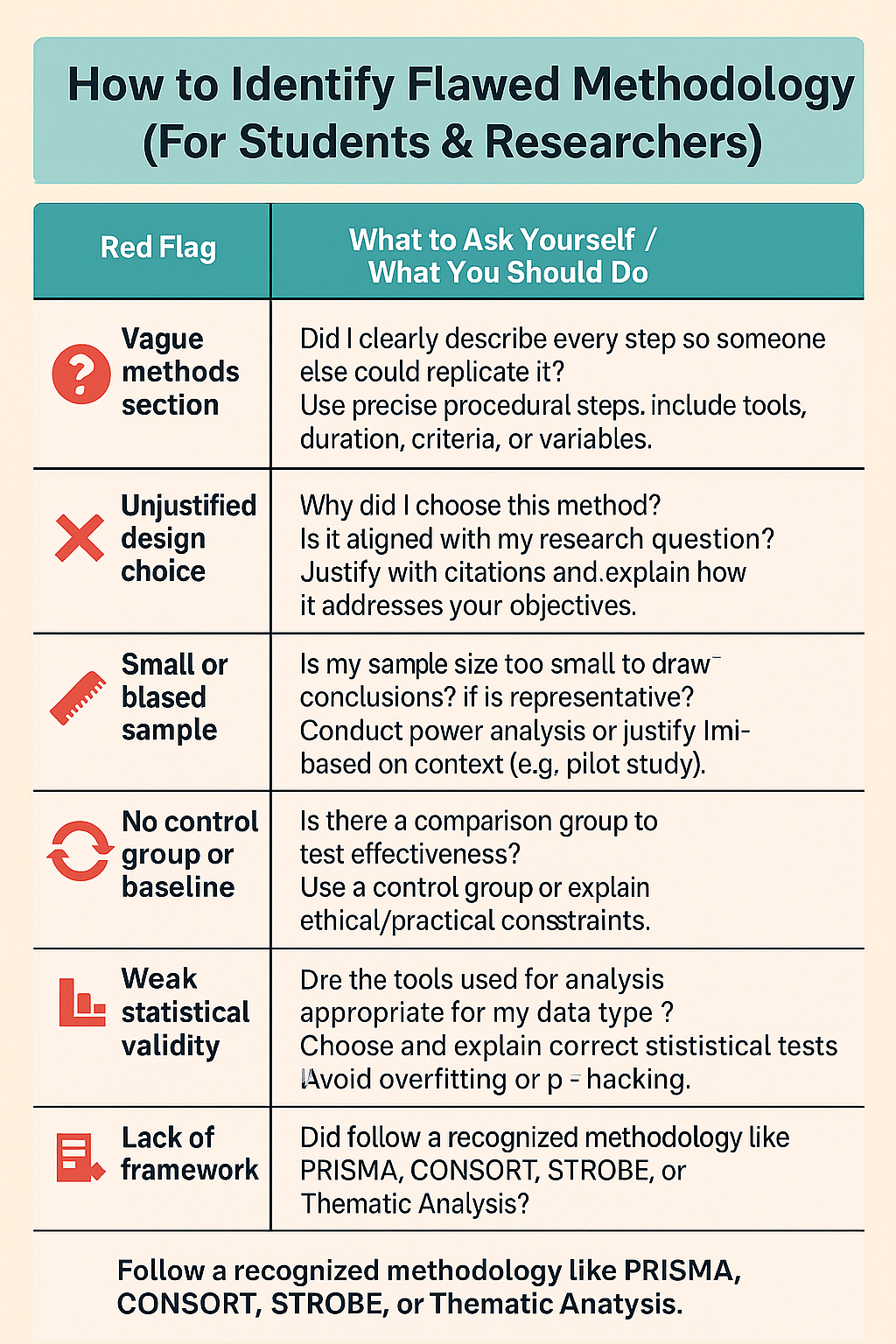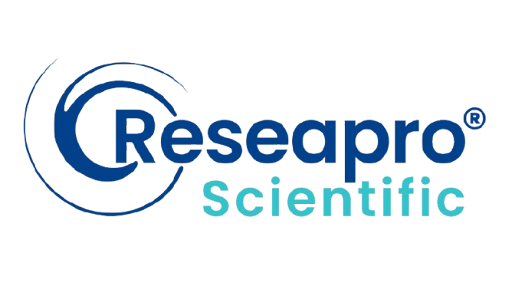With 2025 AI Tool Acknowledgment Guidelines from Major Publishers & Universities
- 1. Weak Research Question or Scope Misalignment
- 2. Incomplete or Outdated Literature Review
- 3. Inadequate or Flawed Methodology
- 4. Poor Manuscript Structure or Formatting
- 5. Weak or Unclear Data Analysis
- 6. Weak Discussion and No Practical Contribution
- 7. Ethical Violations and Non-Compliance
- 8. Poor Journal Fit or Ignoring Submission Guidelines
- 9. Language and Clarity Issues (Especially for ESL Authors)
- 10. Undisclosed Use of Generative AI Tools
Academic publishing is an uphill journey. Even the most diligent scholars face paper rejection—sometimes repeatedly. A 2024 article by Teixeira da Silva & Nazarovets in Learned Publishing revealed that most manuscript rejections are due to avoidable issues like unclear methodology, poor structure, or ethical non-compliance.

With the increasing use of AI tools like ChatGPT and Grammarly, another critical rejection reason is gaining traction: undisclosed use of generative AI.

Here’s a breakdown of the top 10 reasons research papers get rejected—and what you can do to avoid them in 2025, with updated AI acknowledgment standards from Elsevier, APA, and top universities like Melbourne and Leeds.
1. Weak Research Question or Scope Misalignment
Why it gets rejected: Your research question lacks clarity or fails to address a gap.

How to fix it:
- Define a precise, novel research aim.
- Review your target journal’s aims & scope.
- Align the question with current debates.
Concept Explained:
A weak research question is one that is either too vague, too broad, already answered in prior literature, or lacks a clear focus on a current problem.
Scope misalignment happens when your paper doesn’t fit the journal’s subject area or intended readership, even if the topic is valid.
Example – Weak Research Question:
Let’s say a PhD scholar in marketing submits this question:
“How does social media affect people?”
This is too broad and vague. It doesn’t indicate:
- What kind of social media (e.g., Instagram, LinkedIn)?
- What kind of “people” (e.g., teenagers, working professionals)?
- What aspect is being studied (e.g., behaviour, brand loyalty, mental health)?
Revised Research Question (Stronger):
“How does Instagram influencer marketing impact the purchase decisions of Gen Z consumers in the Indian cosmetic industry?”
This version:
- Is specific and measurable
- Focuses on a defined group (Gen Z in India)
- Relates to a timely and debated topic in marketing research
- Can be mapped to a journal’s aims, such as Journal of Consumer Behaviour or Journal of Interactive Marketing
Example – Scope Misalignment:
Suppose the scholar submits the revised study on Instagram influencers to a healthcare journal, like BMC Public Health.
Even if the research is excellent, it will likely be desk rejected because:
- The topic isn’t aligned with the journal’s audience (clinicians, public health policymakers)
- It lacks healthcare relevance
What to Do Instead:
Check the journal’s scope, recent articles, and keywords in its “About” section. Use journal finder tools from Elsevier, Springer, or Wiley.
Bottom Line for Researchers:
- Be laser-focused in your question. Your reader should know what, why, and who you’re studying from the question itself.
- Submit your paper to a journal where the editor can instantly see why it belongs there.
🔑 Keywords: weak research question, journal mismatch
2. Incomplete or Outdated Literature Review

Why it gets rejected: Your review doesn’t reflect the latest research or misses critical citations.
How to fix it:
- Use Scopus, Web of Science, and Google Scholar.
- Limit references older than 5 years unless historically relevant.
- Show how your work builds on or challenges existing findings.
🔑 Keywords: literature review rejection, scholarly citations
3. Inadequate or Flawed Methodology
Why it gets rejected: Design issues, lack of controls, or vague protocols.

How to fix it:

- Use standardised frameworks (e.g., PRISMA for reviews).
- Justify methodological choices clearly.
- Ensure statistical power and reproducibility.
Keywords: research methodology, peer review rejection
4. Poor Manuscript Structure or Formatting

Why it gets rejected: Your paper is hard to follow, poorly formatted, or too long.
Why Journal Formatting Matters — And How It Leads to Rejection
Desk Rejections Due to Poor Formatting
Many research manuscripts are rejected within minutes of submission — without peer review — because they fail to follow the journal’s formatting guidelines. This is known as a desk rejection. Editors receive hundreds of submissions and often use formatting as an early filter to eliminate papers that don’t meet basic professional standards.
Common formatting-related reasons for desk rejection:
- Wrong referencing style (e.g., using APA in a journal that requires Vancouver)
- Improper margins, font type, or line spacing
- Exceeding the word/page/figure limit
- Lack of structured headings (e.g., missing abstract or conclusion)
- Figures and tables not embedded or improperly labeled
- Missing ethics approval or declarations
Why It’s Important
Proper formatting is not just about aesthetics — it demonstrates:
Professionalism: Shows you respect the journal’s standards
Clarity: Helps reviewers and readers navigate your argument
Efficiency: Makes peer review smoother and faster
Compliance: Reduces the risk of ethical or legal concerns being missed
Many journals explicitly state in their submission checklist that non-compliant manuscripts will not be reviewed, regardless of quality.
Tip for Researchers:
Always download the journal’s “Instructions for Authors” and use it as a checklist before submission. Even top-quality research gets rejected if it appears careless or unprofessional due to formatting issues.
How to fix it:
- Follow the IMRaD structure.
- Use tools like Grammarly or Word’s style checker.
- Respect word limits and section order.
Keywords: academic writing clarity, manuscript formatting
5. Weak or Unclear Data Analysis

Why it gets rejected: Raw data is poorly interpreted or statistical methods are flawed.
How to fix it:
- Restate your hypotheses in the results section.
- Present data visually (tables, charts).
- Avoid overanalysis or inflated significance claims.
Keywords: data analysis errors, results presentation
6. Weak Discussion and No Practical Contribution

Why it gets rejected: Your discussion doesn’t tie back to the research aim or lacks relevance.
How to fix it:
- Discuss how your findings add to theory and practice.
- Address limitations.
- Suggest future directions.
🔑 Keywords: discussion section, practical relevance
7. Ethical Violations and Non-Compliance
Why it gets rejected: Issues like plagiarism, salami slicing, or lack of IRB approval.

How to fix it:
- Use iThenticate or Turnitin to check originality.
- Secure ethics clearance before submission.
- Submit conflict of interest and consent declarations.
Keywords: academic ethics, IRB approval, ethical publishing
8. Poor Journal Fit or Ignoring Submission Guidelines
Why it gets rejected: The topic is out of scope, or you ignored formatting instructions.

How to fix it:
- Use Elsevier Journal Finder or Springer Journal Suggester.
- Study the journal’s latest issues.
- Follow submission checklist strictly.
🔑 Keywords: journal selection, scope mismatch, author guidelines
9. Language and Clarity Issues (Especially for ESL Authors)
Why it gets rejected: Editors struggle to follow your argument due to grammar, syntax, or jargon.

How to fix it:
- Use professional editing or language polishing services.
- Avoid AI overreliance without review.
- Write for a global audience—be clear and concise.
🔑 Keywords: English editing, ESL academic writing
10. Undisclosed Use of Generative AI Tools
Why it gets rejected: Journals now require authors to disclose AI use in writing, editing, or analysis.

📣 What Leading Journals & Universities Say in 2025:
- Elsevier: Authors must disclose any use of AI in methods or acknowledgments. AI tools cannot be listed as authors.
- APA: Requires disclosure of model, version, and specific usage (e.g., “used ChatGPT-4 to improve sentence clarity”).
- BMJ & Wiley: State that undeclared AI assistance constitutes ethical misconduct.
- University of Melbourne: Students must declare tool name, purpose, and prompt used.
- University of Leeds: Encourages transparency in acknowledgments or declarations sections.
How to Fix It:
- Include a formal statement:
“Portions of this manuscript were refined using ChatGPT-4 by OpenAI for language polishing. Prompts included: ‘Rewrite in active voice.’ The final content was reviewed and edited by the authors.”
- Cite tools appropriately if used in data analysis or writing assistance.
- Add an “AI Acknowledgment” section in your paper after references.
Keywords: AI use in research papers, ChatGPT in academic writing, APA ChatGPT citation
Bonus Tip: Don’t Give Up After Rejection
Every rejection is an opportunity to refine your research. Use editor feedback, revise your manuscript, and consider resubmitting to a more suitable journal.
Final Thoughts
Rejections are not the end—they’re part of the academic journey. By proactively addressing these 10 common pitfalls and openly acknowledging your use of AI, you can increase your paper’s acceptance chances and maintain scholarly integrity.

📨 Need help editing or resubmitting your rejected paper?
👉 Contact ManuscriptEdit’s Expert Team for language polishing, journal selection, peer review assistance, and AI compliance checks.



